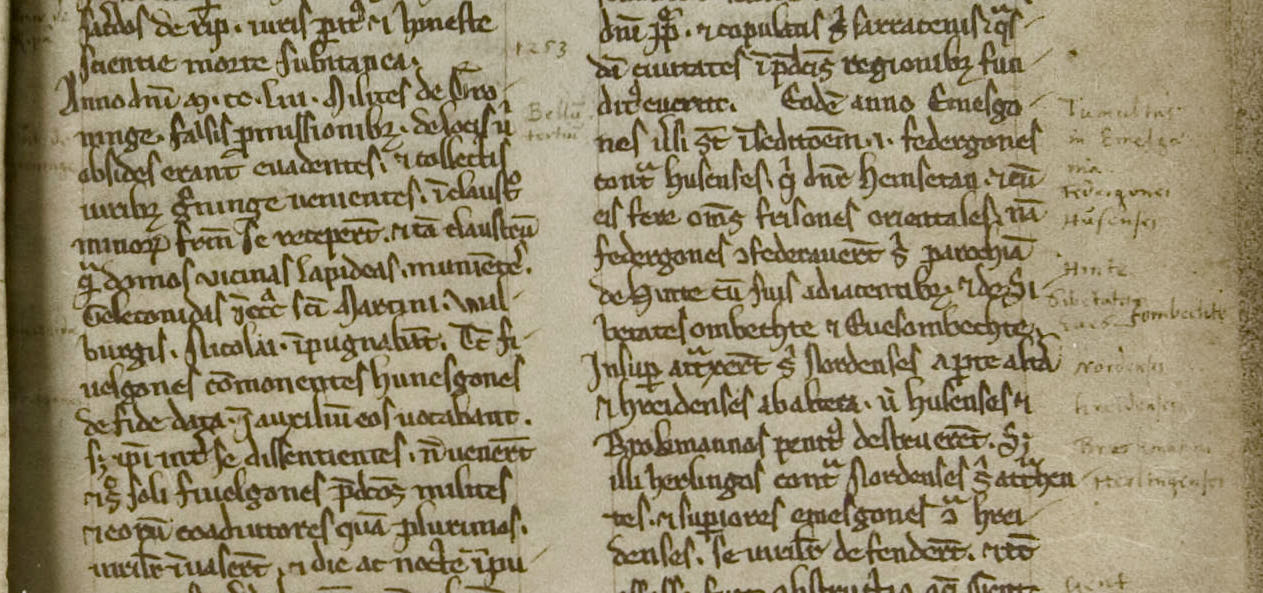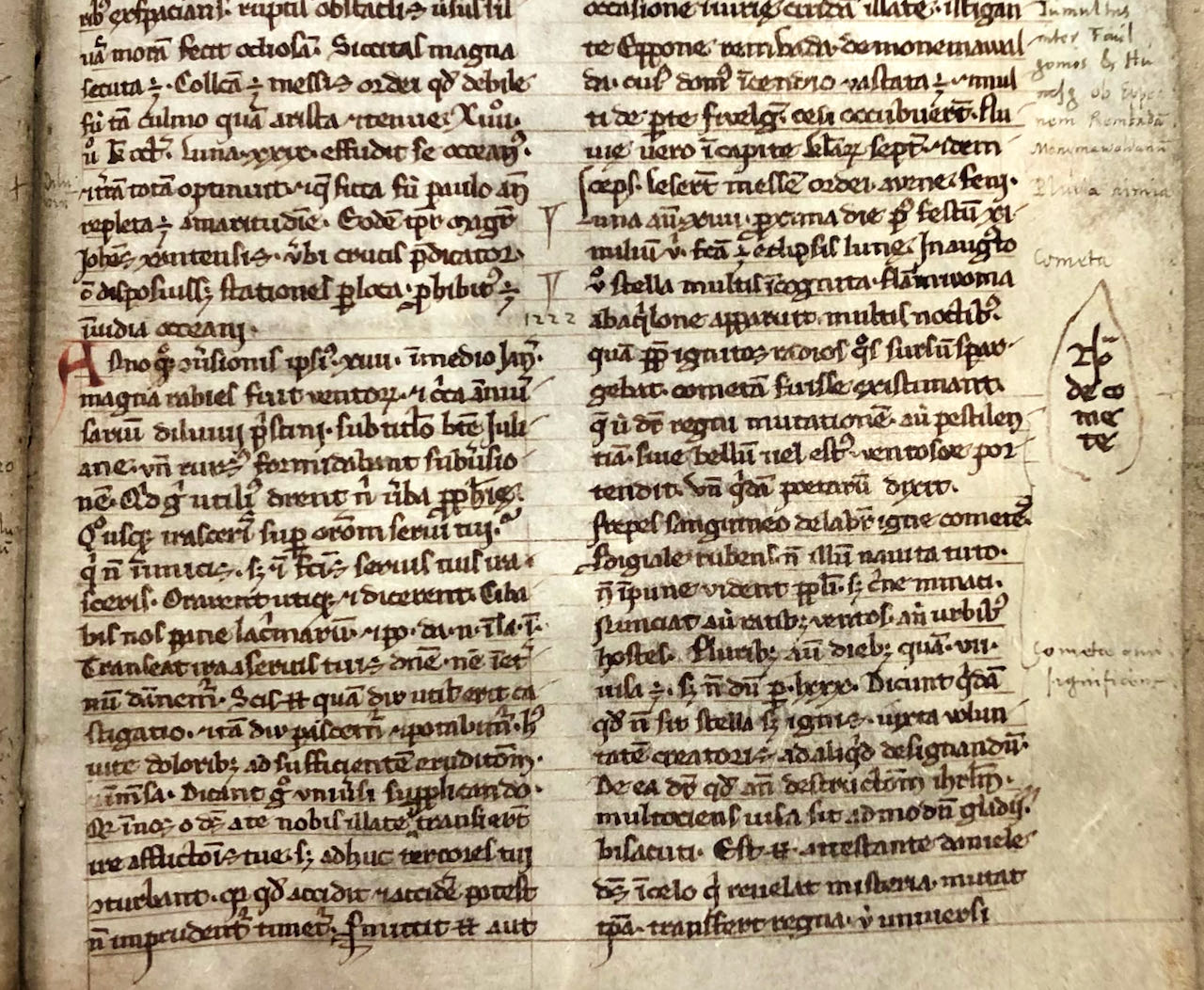In 1211, Emo van Huizinge established a monastery on this location. He called it Hortus floridus (Flower Garden). Emo was a young scholar who had studied in Oxford. To this day, he is still considered the first student from the Continent who studied there. Emo decided that the monastery should join the order of the Premonstratensians, also known as the White Canons, because of the characteristic white habits worn by the monks. Subsequently, the name of the village, Wierum, was changed into Wittewierum (white Wierum). The monastery existed for about 350 years, until it was closed in 1561. These days, a church from the nineteenth century can be found on this location. Remnants of the monastery can still be seen under the pews in the church.
Emo recorded the events that occurred in and around the monastery in a chronicle. His second successor, Menko, continued this tradition. This is how the history of the first century of this monastery has been preserved. The chronicle tells us almost everything we know about the monastery at Wittewierum.

We know, for example, that from 9 November 1211 Emo travelled to Rome. The guardians of the church in Wierum had decided to donate the local church to the monastery, but a local nobleman contested this decision and appealed to the bishop of Münster, who decided in his favour. Emo decided to appeal to the Pope in person. The Pope decided in Emo’s favour and everybody accepted this decision. Unfortunately, Emo does not write much about his journey to Rome. He arrived back home around 6 July 1212.


The chronicle contains facts, opinions, and personal musings. Interestingly enough, it does not contain a lot of information about what happened in the monastery. There are a lot of accounts of events that happened outside the monastery, both nearby and far away, which had (or could have) consequences for the monastery, such as storms, floods, famine, and wars, including the Crusades. We can also read Emo’s, and later Menko’s, opinions about these events. Emo’s personal musings (soliloquia) are quite special. They show that he was not only enterprising and confident, but that he also suffered from serious doubts at every stage of his life, especially while he was abbot of the monastery: he often takes the blame for storms, floods, and other disasters, which were a common occurrence at the time, and he continually asks himself whether God is punishing him for his deeds.
The chronicle of Wittewierum reflects the life of two people from Groningen in the 13th century. The almost casual mention of the death of Frances of Assisi in 1226 reminds us that he and Emo were contemporaries.
There is only one original copy of this chronicle of Bloemhof. It is handwritten by abbot Menko on parchment. He first copied Emo’s text and then continued to add to it for years. This manuscript was kept in the monastery library of Wittewierum until 1561. The last abbot took it with him when he left. It has been in the collection of the University of Groningen Library since 1852, but before that it was in the possession of several private owners. Around 1600, it was owned by Ubbo Emmius, who used it as historical source for his History of Frisia. Ubbo made many notes in the manuscript, which contains a total of about one hundred pages, with two columns of text on each page.
Author: Adrie van der Laan







